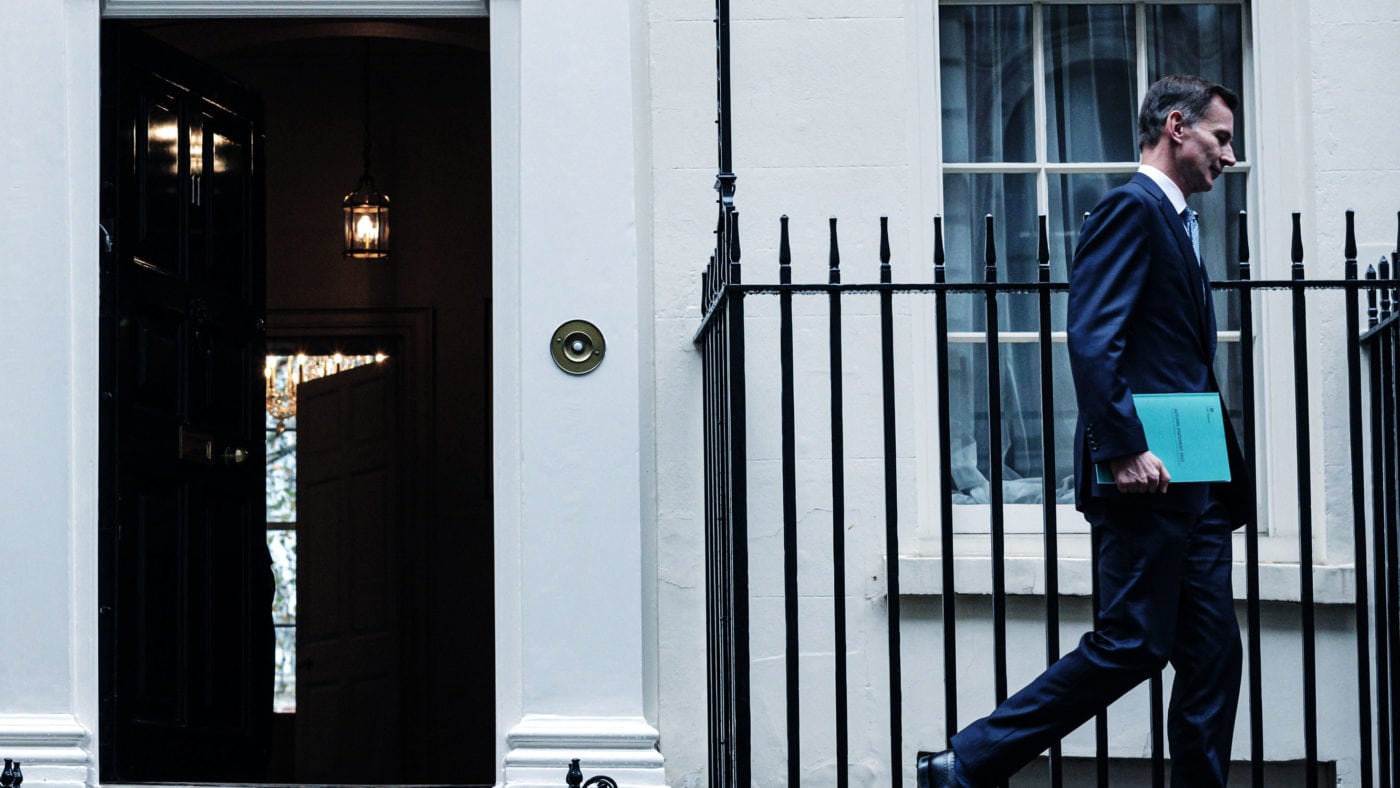Well, it could have been worse. That was my initial reaction to the Autumn Statement – relief brought on by the Chancellor steering clear of the worst policy options that were aired ahead of the latest fiscal event.
On the overall stance of fiscal policy, I was worried Jeremy Hunt would tighten too much as we enter recession, compounding the downturn, and doing more harm than good to the public finances. But I think he largely avoided that outcome: as a package, the Autumn Statement was sensible and measured, with most of the pain pushed beyond the next general election, by which time economic growth should have returned (more on this below).
As for the policy specifics, Hunt did not raise headline tax rates or embark on any truly ill-judged reforms. Look: I hate any and all tax increases, as my past CapX writings will attest, but extending various threshold freezes – and thus broadening the tax base – is pretty much a ‘least-worst’ option if the tax burden really does have to rise. The next government, whether Conservative or not, will have every opportunity to change course if it wants to.
Similarly, it doesn’t really make sense to have big separate tax allowances for dividends and capital gains (though a de minimis exemption does aid administrative simplicity). So I struggle to get worked up about their reduction, even as I feel for savers who now face much higher tax bills. I hope that the loss of generous allowances might be offset by other policies to support personal saving and investment at future fiscal events.
One thing I am very disappointed by is the decision to effectively turn the Truss-Kwarteng stamp duty reforms into a temporary purchase incentive. Stamp duty is undoubtedly the worst tax on the UK statute books – it is wildly distortionary and economically destructive. It makes an already broken housing market function even worse. So undermining previously announced reforms is a clear step in the wrong direction. (It is also part of a worrying theme underlying the Autumn Statement – that supporting extortionate house prices is a legitimate goal of fiscal policy.)
On the other hand, I am delighted to see any plans for an online sales tax comprehensively scrapped. I have said before that an OST would ‘undermine competition, stifle innovation, and distort the market’ and it seems that the Treasury agreed.
I could go on – business rates measures welcome but no substitute for comprehensive reform; energy windfall taxes seemingly well-designed but also a threat to investment in an increasingly competitive global market; extending vehicle excise duty to electric cars sensible and perhaps a step towards road pricing – but I actually think the biggest tax story is one that has nothing to do with this fiscal statement.
That’s the corporate tax cliff edge that we face next year, when the headline rate goes up to 25% and the investment super-deduction expires. There was no sign of capital allowance reform in the chancellor’s speech, but in its absence we are going to end up with a very uncompetitive business tax regime. The Tax Foundation suggests we will fall to 33rd place (out of 38) in its ranking of OECD countries’ corporate tax systems.
This is a massive problem. As the prime minister made clear in his Mais Lecture, weak business investment is one of the biggest and most enduring economic problems Britain faces. But the OBR’s figures suggest that business investment in the first quarter of 2027 will be almost 9% lower than was forecast in March. That is not a trend that policy should be leaning into. We will have to pin our hopes on the Spring Budget.
What about the spending side?
The Chancellor avoid growth-sapping cuts to investment spending – which just about everyone assumed were an inevitability. Now, it’s true that investment spending only rises in real terms over the forecast period because of a notable increase next year (it then falls in every subsequent year). But it could have been much worse. As for day-to-day spending, it will increase by about twice as much as capital spending over five years (1.9% vs. 0.8% in real terms) but that still implies very tight public sector pay settlements and real cuts in ‘unprotected’ areas. Efficiency-boosting reforms will be essential if service standards are to be maintained.
Let’s finish with the longer-term economic picture. Frankly, it remains pretty bleak. OBR forecasts suggest that real disposable incomes will still be below pre-pandemic levels in 2028. And as my colleague Karl Williams has pointed out, the OBR’s growth numbers suggest that productivity growth will be much lower than it forecast in March, because of higher energy input costs, while capital deepening is set to be 40% lower than it previously thought because of weaker business investment.
In fact, the only thing really supporting growth is the assumption that inward migration will be 65–88% higher than previously expected across different years of the forecast. That doesn’t really bother me, but I suspect many conservatives (perhaps including the current home secretary) will feel rather differently.
These depressing facts underline the need for a comprehensive growth plan to be developed and implemented in the months to come. Alongside the plans announced by the Chancellor to reform regulation, unlock investment capital, and build on Britain’s comparative advantages in finance and innovation, this should include the resurrection of Rishi Sunak’s plans to overhaul capital allowances, ensuring that more homes are built where demand is highest, and removing the countless impediments to energy and infrastructure development that hold Britain back.
In short, there is a lot of work still to be done.
Click here to subscribe to our daily briefing – the best pieces from CapX and across the web.
CapX depends on the generosity of its readers. If you value what we do, please consider making a donation.


